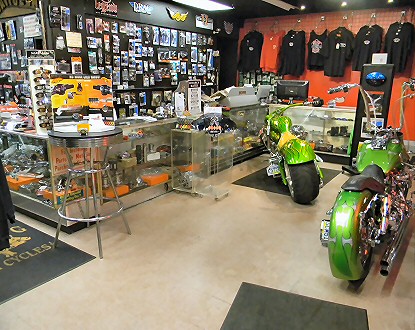Let Loose Efficiency with Costs Motox Parts NZ Available Right Here
Let Loose Efficiency with Costs Motox Parts NZ Available Right Here
Blog Article
Grasping Motorbike Gears: How to Optimize Your Riding Experience
In the realm of motorcycling, grasping the art of gear adjustment is essential for enhancing your riding performance. Correctly understanding and using motorbike gears can considerably impact control, velocity, and gas performance, transforming a typical ride into a smooth, exhilarating journey.
Recognizing Equipment Mechanics
How do the intricacies of gear auto mechanics influence motorbike performance? At the core of motorbike dynamics, equipment auto mechanics play an essential function in transforming engine power right into movement, eventually determining speed and control. Gears, diligently crafted components, allow bikers to enhance torque and speed, guaranteeing a seamless transition through various surfaces and velocities. The equipment proportions, very carefully created, figure out the connection between engine revolutions and wheel turns, impacting velocity and fuel effectiveness.
Recognizing gear technicians begins with acknowledging the significance of the gearbox, which houses numerous gears of differing dimensions. These gears connect through a procedure recognized as meshing, where teeth of different equipments involve to transmit power.
Additionally, the concept of equipment shifting is important to making best use of performance. Prompt and smooth shifts make sure that the engine runs within its optimal power band, protecting against unnecessary stress and boosting longevity (moto parts nz). By comprehending these mechanical ins and outs, riders can accomplish a harmonious blend of power, effectiveness, and control, boosting their riding experience
Timing Your Changes
Change timing mastery is crucial for maximizing motorcycle performance and enhancing the riding experience. Correctly timed shifts make sure that the engine runs within its optimum power band, which is vital for keeping control, attaining smooth velocity, and ensuring the longevity of the motorcycle. Bikers should create an instinctive sense of when to move gears, which involves understanding the relationship between engine changes per min (RPM) and rate.
To understand change timing, pay very close attention to the engine's sound and really feel, as these give essential ideas concerning when to alter gears. When the engine approaches the upper range of its power band without reaching the redline, the perfect shift factor generally happens - mx parts nz. Shifting prematurely can cause a lack of power, while changing far too late might trigger unnecessary engine strain
Furthermore, roadway conditions and riding design impact shift timing. In contrast, throughout freeway riding, fewer changes at greater speeds can be much more ideal.
Enhancing Fuel Effectiveness
While understanding bike equipments is important for performance, improving gas performance is equally crucial for both financial and environmental factors. Optimum fuel usage not just lowers functional costs but additionally reduces the environmental impact of riding. To achieve this, one should comprehend the complex partnership in between equipment selection and engine efficiency.
Riding in a higher equipment at lower rates can lead to engine hauling, which is detrimental to both gas economy and engine health. Conversely, riding in lower equipments at high rates results in unnecessary fuel intake.
In addition, routine maintenance plays a critical function in fuel efficiency. Ensuring that the motorcycle is well-tuned, with tidy air filters and properly pumped up tires, can decrease and boost aerodynamics gas wastage. Furthermore, taking on a riding design that embraces gradual acceleration and smooth deceleration can add to much better gas economic climate.

Techniques for Smooth Transitions
Accomplishing smooth gear changes is essential to enhancing the riding site link experience and making certain the durability of a bike's transmission system. Appropriate equipment shifting not only adds to a smooth experience yet also reduces deterioration on the mechanical parts. To grasp the art of smooth transitions, bikers should concentrate on a few crucial techniques.

Secondly, clutch control plays a pivotal role. Engaging and disengaging the clutch smoothly requires practice. The clutch lever should be launched progressively, enabling a seamless transfer of power from the engine to the wheels without causing a jolt or abrupt motion.

Adjusting to Roadway Problems
Navigating diverse road conditions is a crucial skill for any motorcyclist intending to keep control and safety and security. Whether you're riding on damp surface areas, gravel roads, or navigating doglegs, your capacity to adapt your gear usage and riding strategy is paramount. Understanding just how to readjust your gears suitably can considerably influence grip and stability, guaranteeing a more secure trip.
In comparison, when riding on gravel or unequal terrain, reduced gears are better. Lower equipments offer far better control and website here enable you to react more swiftly to unanticipated modifications in the roadway surface.
Sharp contours demand exact gear administration to stabilize speed and control. Downshifting prior to entering a contour can assist keep momentum while making certain the motorcycle continues to be stable useful site throughout the turn. Constant technique in varied problems boosts your ability to forecast and react to changes in road structure and slope.
Conclusion
Mastering motorcycle gears considerably enhances the riding experience by improving fuel, acceleration, and control efficiency. Adjusting equipment option to different road conditions, such as using higher equipments on damp surface areas and lower gears on crushed rock, more boosts handling and safety and security.
Recognizing equipment auto mechanics begins with recognizing the significance of the transmission, which houses numerous gears of varying dimensions. These equipments communicate through a process recognized as meshing, where teeth of various equipments engage to transmit power (motorbike shop). Gentle adjustments to the throttle throughout gear shifts can protect against jerky motions and preserve a consistent riding rate
Whether you're riding on damp surfaces, crushed rock roads, or navigating sharp turns, your capacity to adapt your equipment usage and riding technique is extremely important. Adjusting gear option to various roadway conditions, such as making use of higher equipments on wet surface areas and reduced equipments on gravel, more improves handling and security.
Report this page